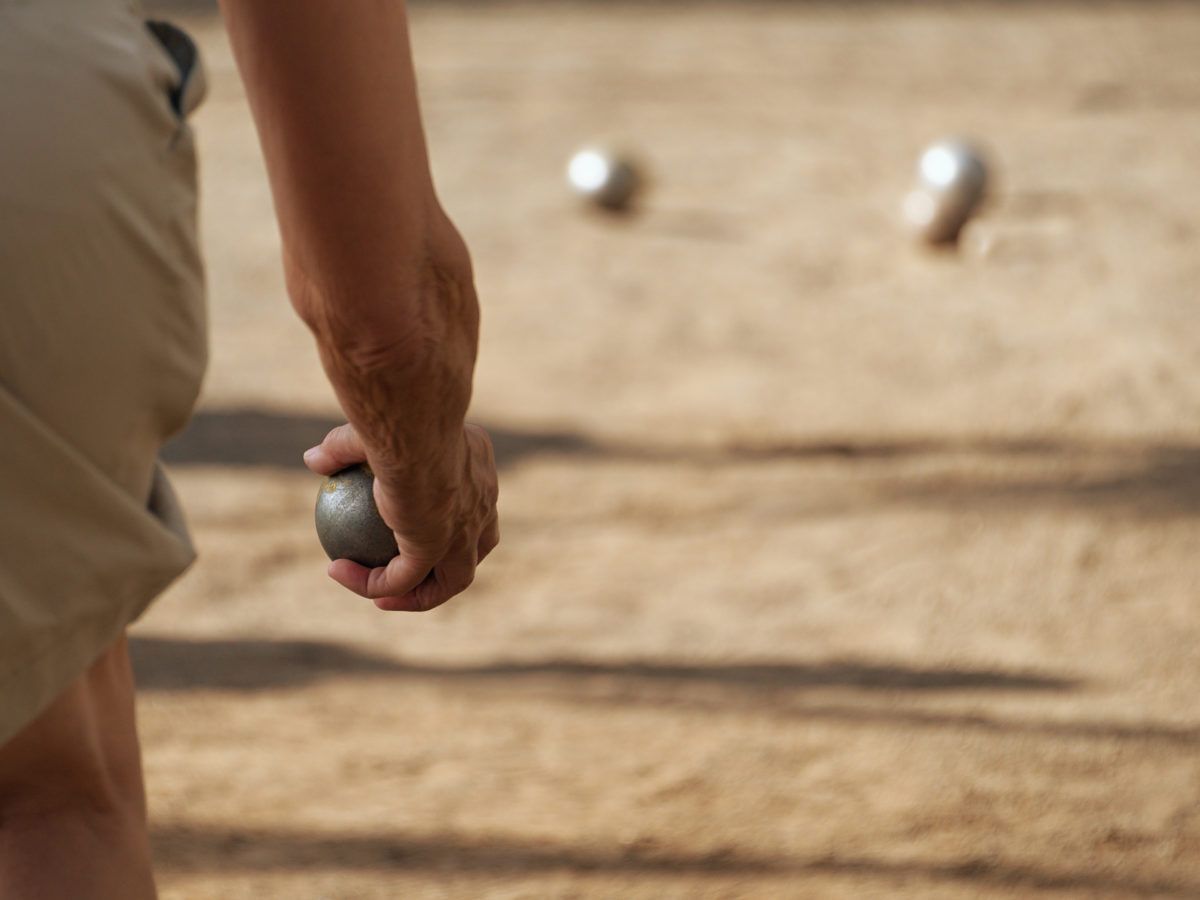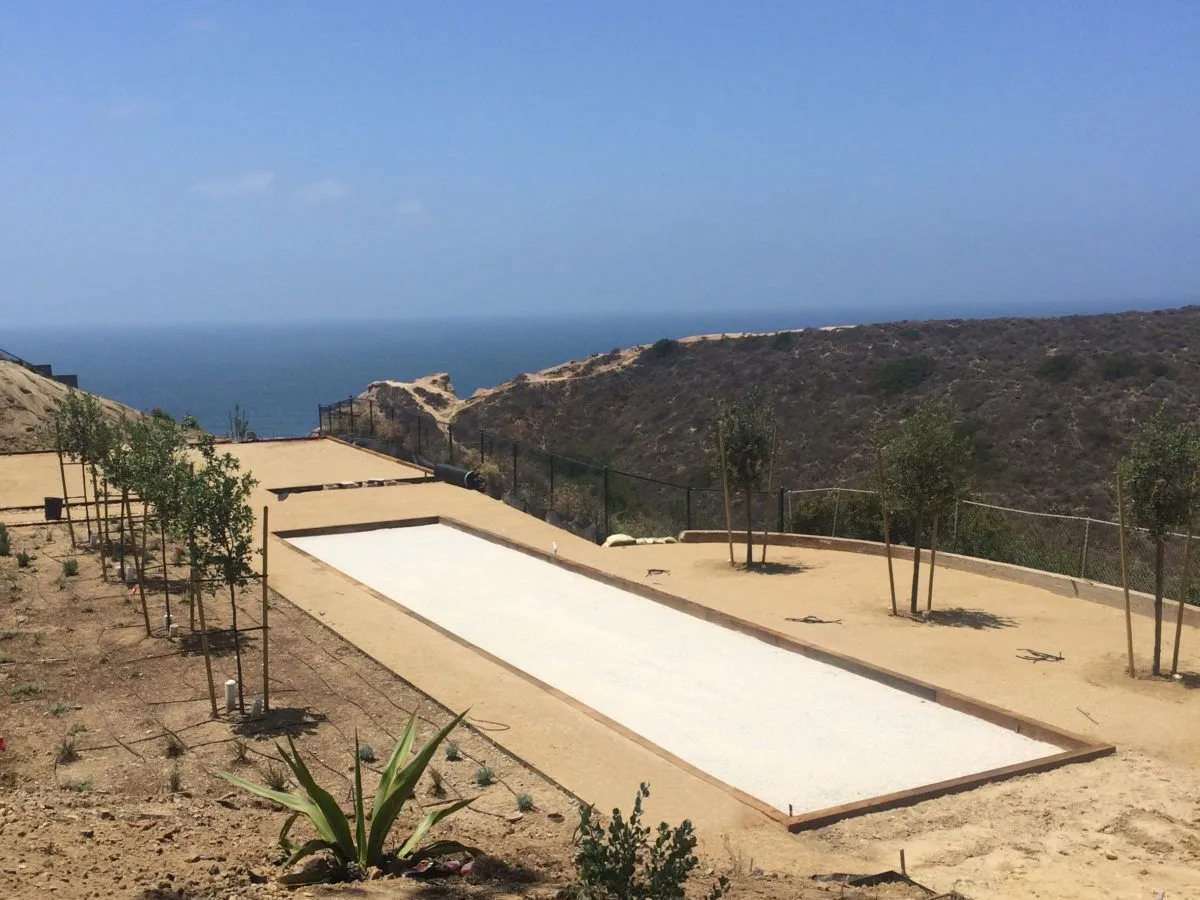How to Build a Bocce Ball Court
Published on: July 24, 2018How to Build Your Own Bocce Ball Court
A new trend in backyards is to include the fun and relaxing game of Bocce Ball. It’s a great use of empty space that provides hours of entertainment as well as an attractive aesthetic. Properly constructed Bocce Ball Courts consist of an oyster shell bed for proper texture & drainage, like the Bocce Blend in stock at your local Southwest Boulder & Stone location. Here is a how-to guide for building your own Bocce Ball Court.
What You’ll Need to Build a Bocce Ball Court
The following list of supplies is recommended to build a 12′ x 60′ Bocce Ball Court.
| Quantity | Size | Material Description |
| 6 | 2″x10″x12″ | Wolmanized (pressure treated) Douglas Fir |
| 12 | 2″x10″x16″ | Wolmanized (pressure treated) Douglas Fir |
| 24 | 5/8×24″ | Steel reinforcing rod -OR- |
| 2″x2″x24″ | Angle irons (alternative for steel reinforcing rods) | |
| 12 tons | Ground oyster shell for the best drainage, or crushed stone (#1 or #2), gravel mix or other combination of pebbles – OR – | |
| 9 tons | Bulk Only | Oyster shell and Double Screened Loam Bocce Blend |
| 10 | 50# Sacks | Oyster Shell Flour as a top dressing |
Note: Specifications do not make allowances for heavy equipment (bulldozers, graders, etc.) In areas where rough grading is necessary, please consult your contractor.
Other tools: Pick, shovel, rake, sledgehammer, hammer, mason’s twine, framing square, 100′ tape measure, 4″x4″x11″ angle iron, vibrating plate tamper (available at equipment rental yards), or a heavy-duty lawn roller (300-500 lbs), transit (if unavailable, use 4′ carpenter level).
Best Ground Cover for Bocce Ball Courts:
1. Site Selection & Preparation
- Choose the most level area you have available to enjoy the best playing conditions.
- If possible, angle the length of your court in a north/south direction to prevent looking directly into the sun at any time.
- While International Bocce Association prescribed court dimensions are 12′ wide by 60′ long, feel free to use whatever size fits in your back yard and will work for your needs.
2. Grading
- Use a bulldozer or bobcat if your site isn’t already relatively level.
- Strip an area slightly larger than your court size of any grass or plants, and treat with herbicide to prevent future growth.
- Spread about 10 tons of #1 or #2 crushed stone evenly over your court area, helping to even out the area and providing a good base for drainage.
3. Bocce Ball Court Layout
- Lay out the court using stakes at each corner and twine.
- When the collier stakes are marked, stretch the mason’s twine around the four stakes, securing it tightly to each of the stakes at the level of the mark.
- Court leveling without a transit: If a transit is not used in the court installation, set the sideboards on one side of the court, using the stretched mason’s twine to keep them in line and leveling each board with a carpenter’s level as you go along. Do not set the end boards yet. After one side has been set, begin setting the opposite side along the mason’s twine. Level this second side relative to the first side by using a long straight board to span the two sidewalls and placing a level on top of the board.
4. Side Wall Anchoring
- Steel reinforcing rods 5/8″x24″ can be used to anchor sidewalls that are thicker than 3″. Drilled vertical holes down through the width of the sideboards at intervals of 5′ to 6′. Drive the rods through the boards until they are flush with the top of the boards
- If 2″ or narrower sideboards are used, 1″x1”x24″ angle iron is suggested. Drive into the ground at intervals of 5′ to 6′ next to the sideboards and attached to the sideboards with screws. In either case, the internal and external finished grades of the court will further help keep the boards in position.
5. Surface Application
- Dump piles of the Bocce Blend at spots along the court and spread it out evenly to achieve a uniform depth of 3″ – 4″. Level with a screed or leveling tool.
- Compact the surface with plate tamper or a heavy lawn roller. You may need to add more Bocce Blend to maintain the 4″ thickness. Spray the surface with a hose to assist compaction.
- When the court has dried out completely, cracks may appear on the surface. Use the backside of a rake to move the surface around to fill in the cracks. A garden roller will also work.
- Dust the court with oyster shell flour and roll flat to make the wear surface. Mist, dry add more flour and roll again until the surface is solid and smooth. Don’t overdo it, and save leftover flour for future court maintenance.
- Find the dimension of the end boards by measuring the distance from the top of the surface and the top of the sideboards. Fasten the end boards to the sideboards by flailing or screwing. Do not use reinforcement rods on the end boards. Since the end boards receive constant pounding, it may become necessary to replace them occasionally.
- After the end boards are in place, the court surface should be “screeded” again, dampened and rolled.
- The court is now ready for use. Although it may appear spongy at first, use of the court and maintenance will help it compact naturally.
6. Bocce Ball Court Markings
- In-bounds markers and foul lines should be applied to the side walls and end boards of the court. The markings are traditionally painted or taped on the wall boards and do not require marking on the court surface.
Bocce Ball Court Maintenance
Your bocce ball court can provide years of enjoyment with minimal maintenance and little additional expense. For regular maintenance, “groom” the court after use with a 24” push broom with long, coarse bristles. Attach two brooms together to form a 48″ wide broom that you can easily drag the length of the court. Occasional maintenance (once a month for home courts, one a week for commercial) requires brooming, wetting, then rolling the court. Additional oyster shell flour can be added.
For spring maintenance, loosen the surface of the court with a rake, broom, wet, and roll the court. Use the 4″x4″x11’6″ angle iron to reestablish a flat surface whenever necessary. The side boards may require the occasional realignment. Enjoy your bocce ball court with friends and family for year to come!
























